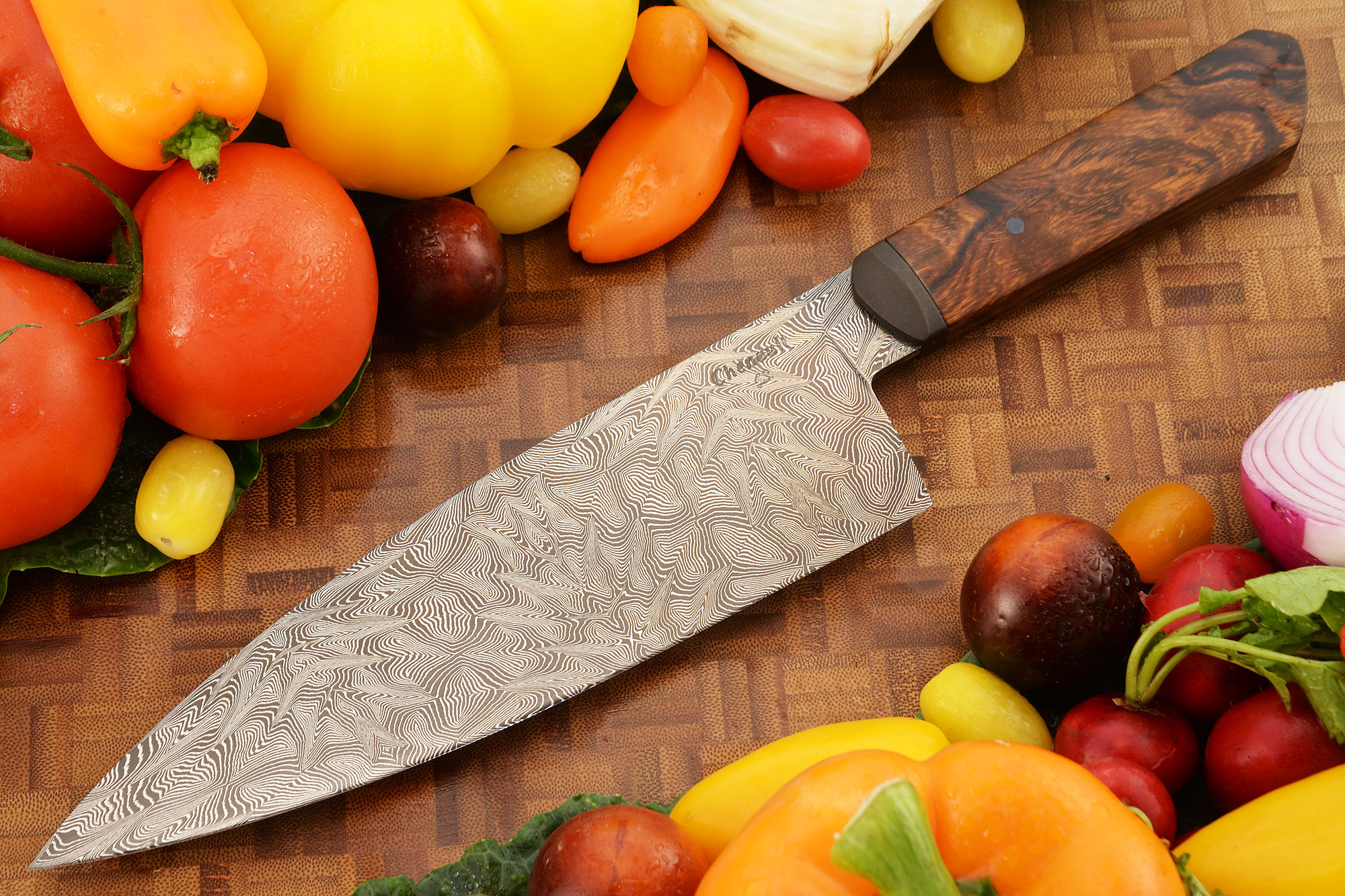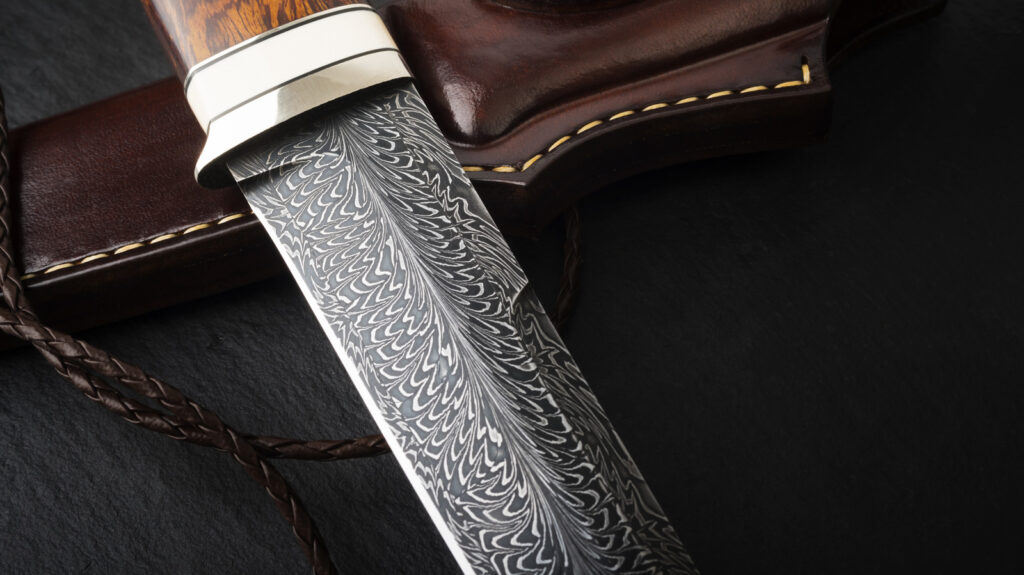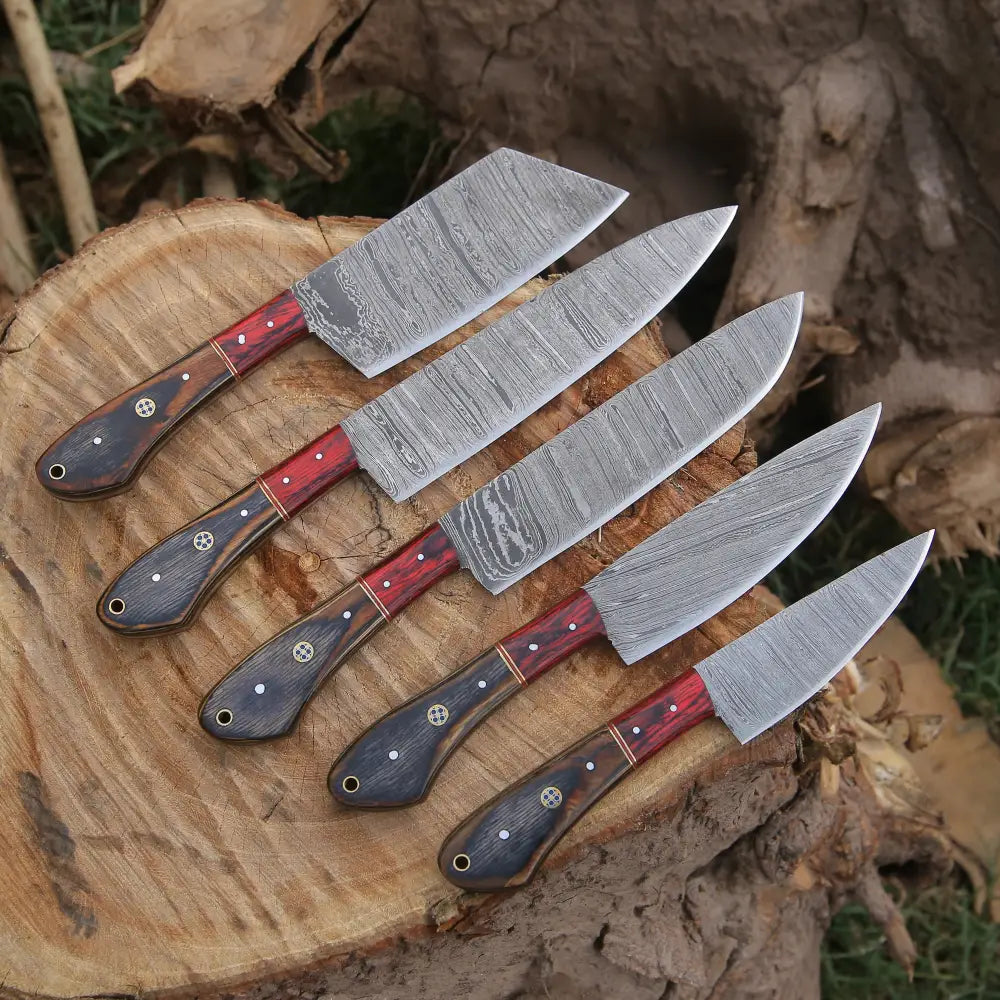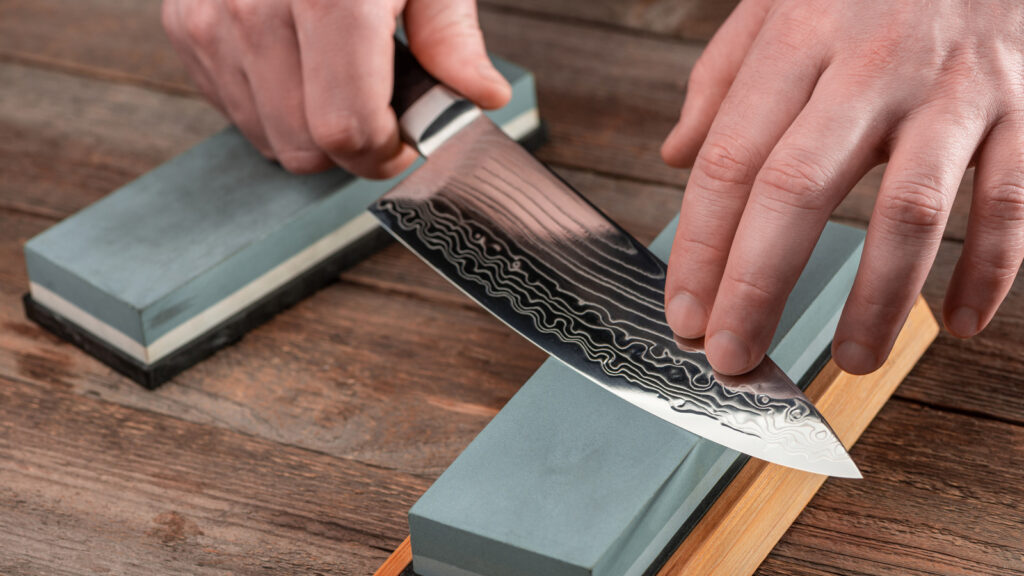
Damascus steel has fascinated enthusiasts and craftsmen for centuries with its robust durability, unique blade patterns, and historical significance. Particularly, the artistry of Damascus kitchen knives transcends the mere concept of cooking tools; it represents an emblem of culture, craftsmanship, and high-quality metallurgy.
These enigmatic knives have become globally revered due to their exceptional sharpness, long-lasting edge retention, and stunningly beautiful designs that make every culinary experience a true delight. However, the allure of a Damascus knife extends beyond its physical qualities to its rich history and the meticulous artisanal skills involved in its creation.
Origins of Damascus Steel

The term “Damascus” steel originated from the capital city of Syria, where historical annals suggest this unique metal was first produced hundreds of years ago.
Damascus steel was sought after in ancient times for its exceptional toughness and ability to hold a sharp edge, making it a favorable commodity for producing weapons like swords. Revered for the distinctive wavy or “watered” patterns on its surface, this steel’s unique appearance is traditionally linked to the technique of folding and forging together several layers of different types of steel.
However, the original method of creating Damascus steel is considered to have been lost over time, turning it into somewhat of a metallurgical mystery.
The specific balance of carbon and iron, along with the precise forging techniques that resulted in the legendary strength and aesthetics of true Damascus steel, remain a subject of historical debate.
Despite this, modern blacksmiths and knife makers have been able to replicate the characteristic appearance and performance of this steel by using contemporary metalworking techniques.
Unique Characteristics of Damascus Kitchen Knives
Damascus kitchen knives, apart from their historical significance and distinctive beauty, stand out due to their superb performance. One of their prime characteristics is their remarkable durability and resilience. The folding and forging process that Damascus steel undergoes contributes to its toughness.
Simultaneously, the presence of softer steel layers ensures the blade’s flexibility, making these knives exceptionally resilient to wear and tear compared to regular blades. This distinctive blend of hard and soft steel results in an extraordinary cutting tool that offers both longevity and reliable performance.
Another significant attribute of Damascus kitchen knives is their commendable edge retention. The high carbon content of the hard steel used in their creation contributes to a blade that remains sharp for extended periods, even with regular use.
Lastly, but far from least, the unique ripple-like aesthetic appeal sets Damascus knives apart. Each knife is a piece of art with complex patterns running along its blade – a testament to the detailed process and attention to detail that goes into the creation of each knife.
The Different Types of Damascus Kitchen Knives

Damascus kitchen knives cater to the full spectrum of culinary needs, offering various types purposed for different cooking tasks.
One key type of Damascus knife that finds a place in many kitchens is the chef’s knife. Often considered the workhorse of the kitchen, this knife features a broad and sharp blade that performs excellently in chopping, dicing, and slicing a wide range of items including vegetables, fruits, and meats.
Its versatility coupled with the durability and sharpness of Damascus steel make it an invaluable tool for both professional chefs and home cooks.
Aside from the chef’s knife, other Damascus kitchen knives have specific functionalities. The paring knife, for instance, is smaller and perfect for precision tasks, such as peeling and trimming.
Bread knives, on the other hand, have longer, serrated blades, ideal for cleanly slicing through crusty loaves without compressing the soft interior. Utility knives tend to be medium-sized, acting like a bridge between a paring knife and chef’s knife.
They are perfect for cutting larger vegetables and sandwich meats that are not large enough for a chef’s knife. Each type of Damascus kitchen knife, characterized by unique design and purpose, signifies the fusion of stunning aesthetics and unmatched functionality.
Maintenance and Care of Damascus Kitchen Knives

While Damascus kitchen knives are, by nature, resilient and enduring, regular maintenance and proper care practices can significantly enhance their longevity and performance. Sharpening is a vital element of maintaining any knife, and Damascus knives are no exception.
These knives must be sharpened using a whetstone as opposed to a regular kitchen knife sharpener, and it’s advisable to keep a consistent sharpening angle for best results. Maintaining the edge sharpness not only fine tunes its performance but also maintains the unique aesthetic of the blade.
Equally important to the knife’s upkeep is its cleaning and storage. It’s recommended to avoid dishwashing Damascus kitchen knives and instead, hand wash them with a mild detergent, gently drying them immediately to prevent moisture-induced damage.
In terms of storage, knife blocks or magnetic strips are ideal to prevent unnecessary contact with other utensils, which can inadvertently damage the blade’s edge or the detailed patterns on the knife. Through regular maintenance and proper care, these artistic tools will retain their aesthetic charm and functional prowess, serving you flawlessly in the kitchen for many years.
The artistry of Damascus kitchen knives lies not only in their signature ripple-patterned aesthetic but also in their history, craftsmanship, and superior performance.
These unique attributes combine to make these knives more than just kitchen tools – each Damascus knife is a piece of art, a symbol of historical metallurgy, and a testament to impeccable craftsmanship. Whether you are finely slicing vegetables with a chef’s knife or carefully peeling fruits with a paring knife, handling a Damascus blade is an experience that combines functionality with enchanted art.




